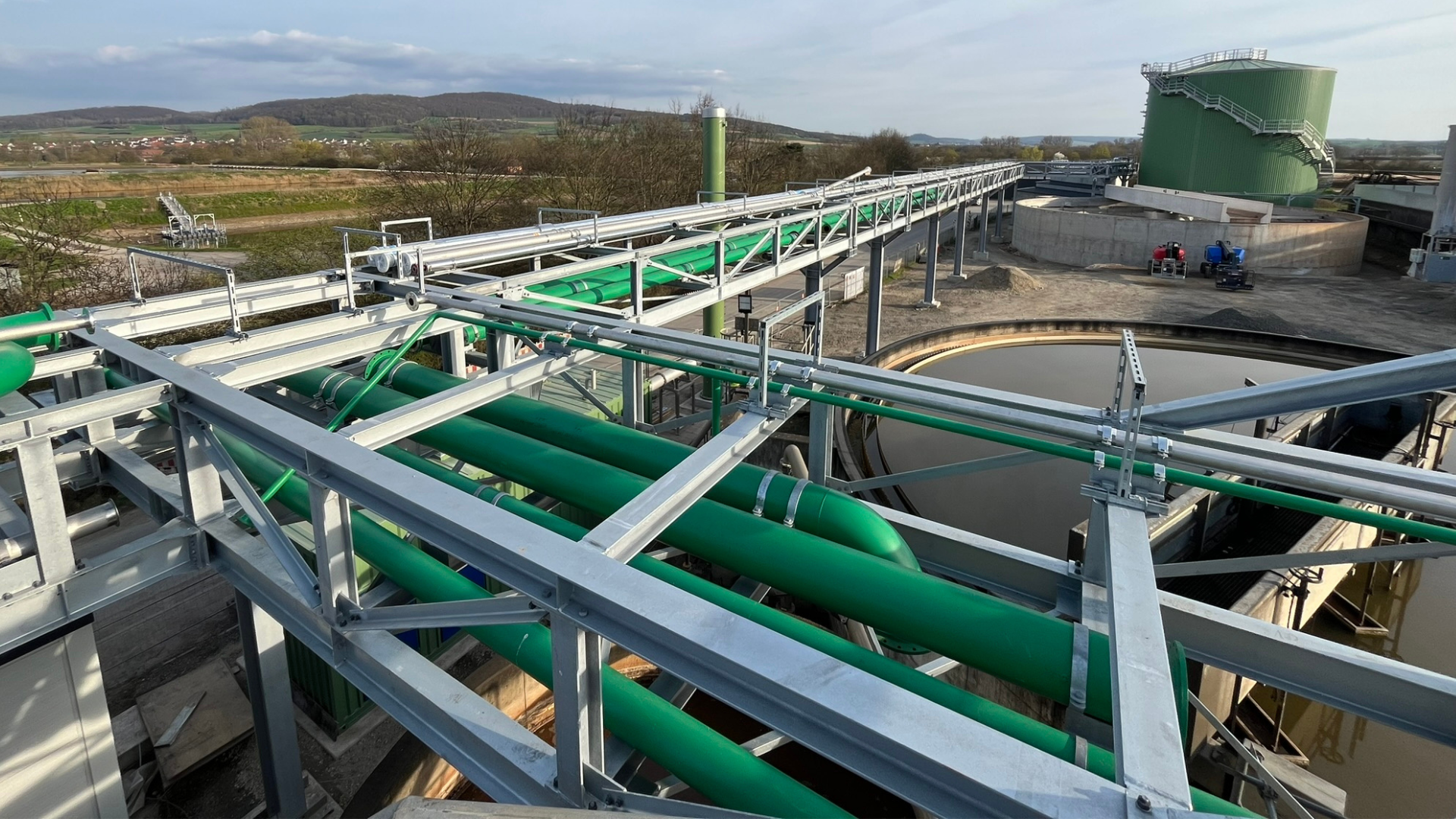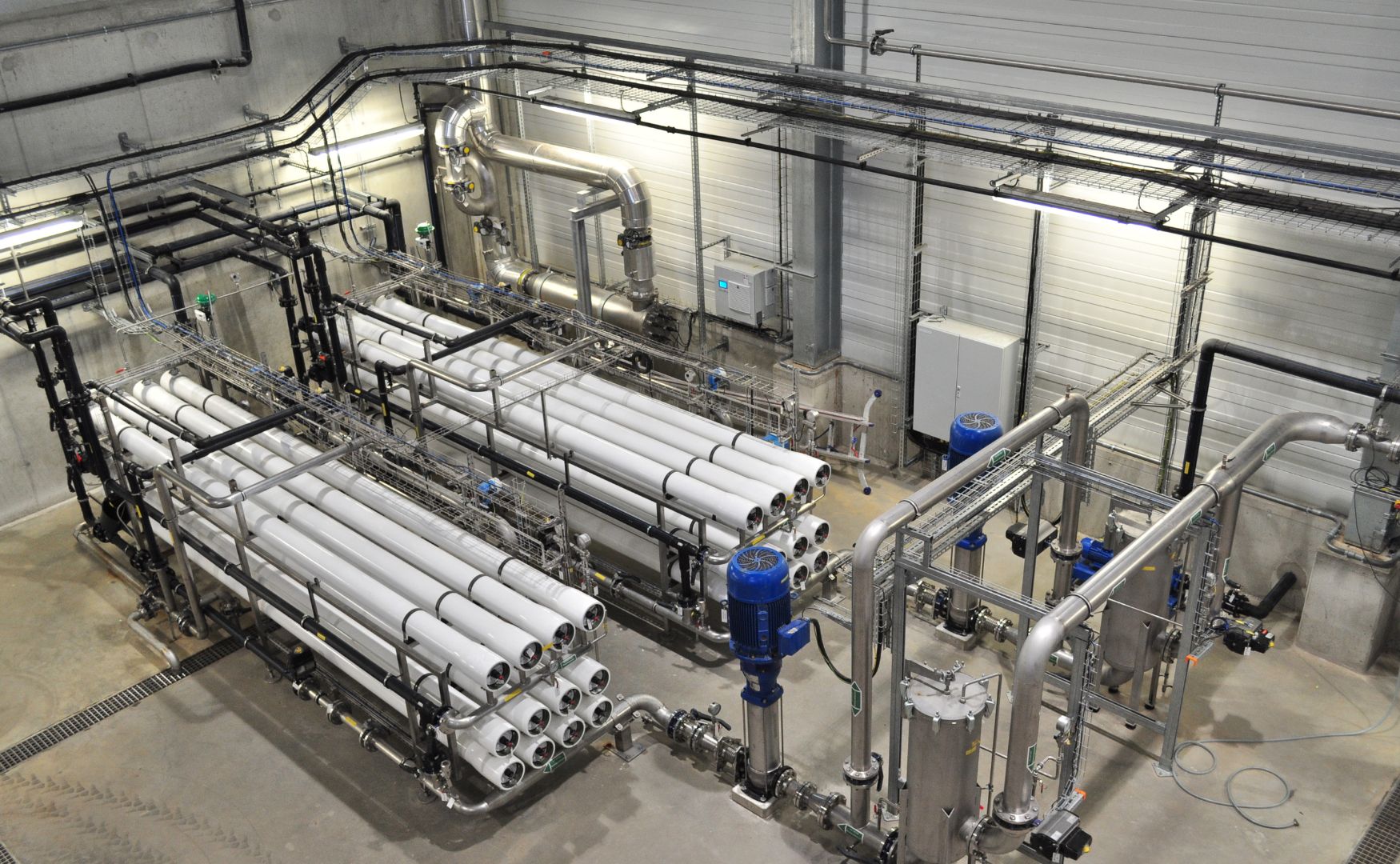The influent load describes the quantity of a specific substance load that is fed into a water or wastewater treatment plant within a defined time interval. In contrast to the influent concentration, which specifies the amount of substance per unit volume of water (e.g. mg/L), the influent load takes into account the volume of water and is specified in units such as kg/day or g/h.
In industrial water and wastewater technology, this parameter is crucial for the dimensioning, operational management and performance evaluation of plants, as it integrates both the hydraulic and the material load. The influent load is taken into account in almost all treatment processes, including biological reactors, chemical-physical processes and membrane processes.
Table of contents
Relevance of the inlet load in wastewater technology
Dimensioning of water treatment plants
The feed load is a key parameter in the design of plants. It determines the size and capacity of the individual process stages, e.g:
- Biological reactorsThe biomass quantity and the reactor volume are calculated on the basis of the organic feed load (COD or BOD₅).
- Chemical-physical treatmentThe dosage of chemicals for precipitation and flocculation depends on the load of heavy metals, phosphates or other pollutants.
- Membrane systemsThe organic and particulate feed load influences the fouling potential and thus the necessary pre-treatment.
Operational optimization
Continuous monitoring of the feed load enables efficient process control:
- If loads fluctuate, the dosing of chemicals or the aeration rate in biological reactors can be adjusted.
- Systems can react specifically to peak loads in order to avoid overloads and efficiency losses.
Compliance with legal requirements
The influent load is often a direct indicator of compliance with legal limits:
- Discharge load: The maximum permissible pollutant load that may be discharged into water bodies is regulated in units such as kg/day.
- Monitoring requirements: The influent load is checked regularly to ensure that industrial wastewater does not exceed environmental limits.

Photo: Our anaerobic biogas reactor ALMA BHU GMR: The dimensioning and design of the reactor are based on the feed load in order to ensure optimum biogas production and process stability.
Factors influencing the inlet load
Waste water volume flow:
- Production peaks or seasonal fluctuations can increase the volume flow and thus influence the inlet load.
- Homogenization through buffer tanks can compensate for fluctuations.
substance concentration:
- Variations in production lead to fluctuating pollutant concentrations.
- Examples: Residues of chemicals, organic pollution or heavy metals.
Operating conditions:
- Rinsing cycles and cleaning processes in industrial plants can generate high inflow loads in the short term.
Application examples of the incoming freight
1. biological treatment
In biological reactors such as the activated sludge process or anaerobic bioreactors the organic feed load (COD/BOD₅) is used for design and control:
- COD load: Measure of the quantity of biodegradable organic substances.
- Loading rate: The specific load (kg COD/kg biomass) influences the process stability and the oxygen demand.
2. chemical-physical treatment
In chemical-physical processes (CP plants), the influent load of heavy metals, phosphates or fats is used for chemical dosing:
- Precipitants: Dosing of iron(III) or aluminum salts is based on the metal load.
- Neutralization: Acidic or alkaline loads require precise pH control.
3. membrane process
The feed load determines the fouling and scaling potential in membrane processes such as reverse osmosis or ultrafiltration:
- High organic or particulate loads require intensive pre-treatment by ultrafiltration or biofiltration.

Photo: Our ALMA OSMO reverse osmosis system: The precise calculation of the required membrane surface area is largely based on the feed loads to ensure optimum performance and efficiency.
Practical challenges
Fluctuations in the inlet load:
- Strongly varying loads can lead to overloading or underdosing.
- Solution: Use of buffer tanks and continuous monitoring of the freight.
Measuring accuracy:
- The calculation of the inlet load requires precise measurements of the volume flow and the concentrations.
- Online analyzers: Enable real-time data for process control.
Extreme loads:
- Sudden peak loads, e.g. due to cleaning cycles, require flexible system concepts.
Conclusion
The influent load is a key parameter in industrial water and wastewater technology that forms the basis for the design, control and monitoring of treatment processes. It makes it possible to precisely quantify the material load of a wastewater, taking into account the volume flow.
Precise knowledge of the incoming load is essential in order to:
- operate systems efficiently,
- avoid overloading,
- comply with legal requirements.
By using modern measurement technology and homogenization strategies, plant operators can ensure stable and resource-saving wastewater treatment even with fluctuating loads.
For further information on our products, please feel free to contact us at any time!








